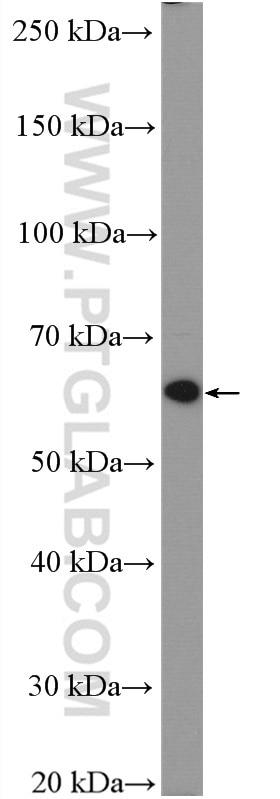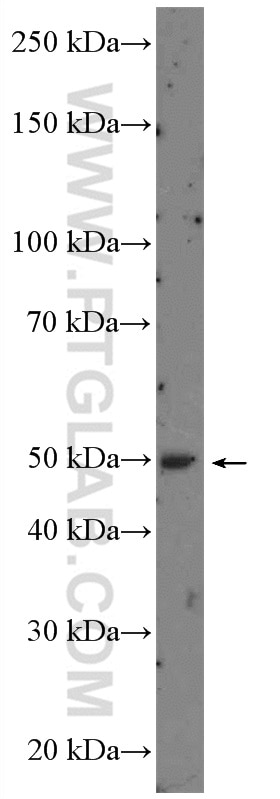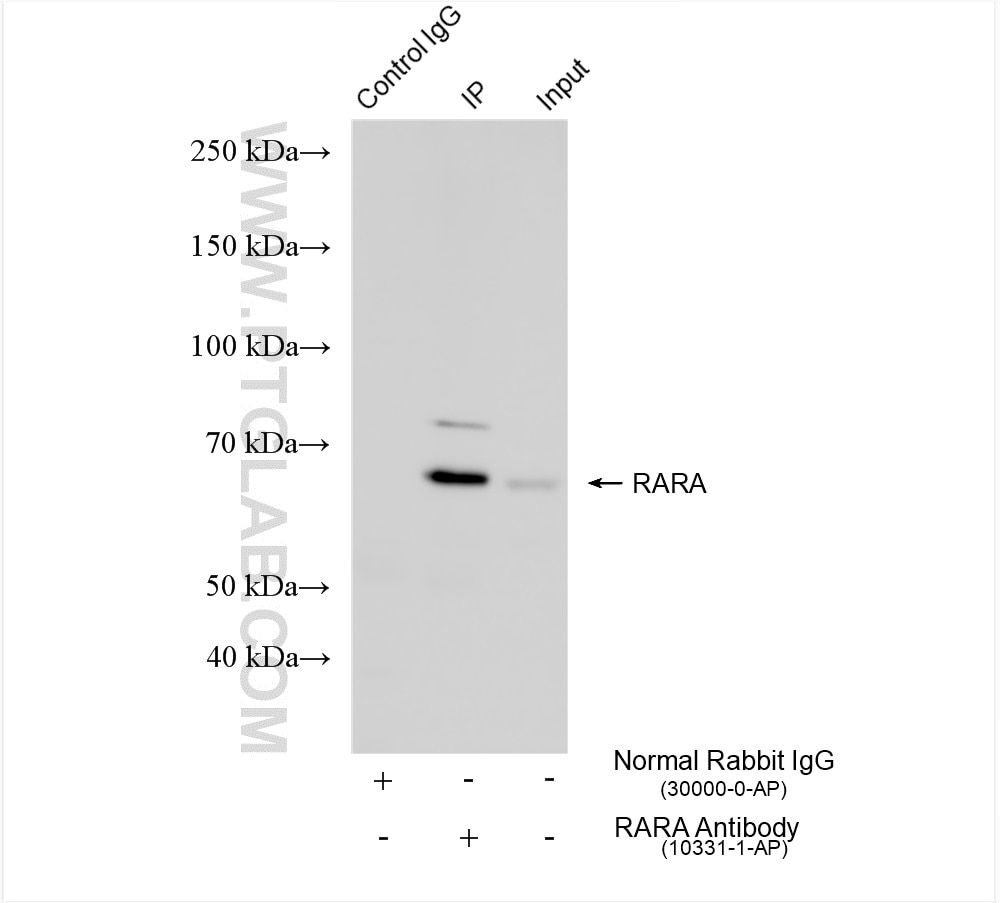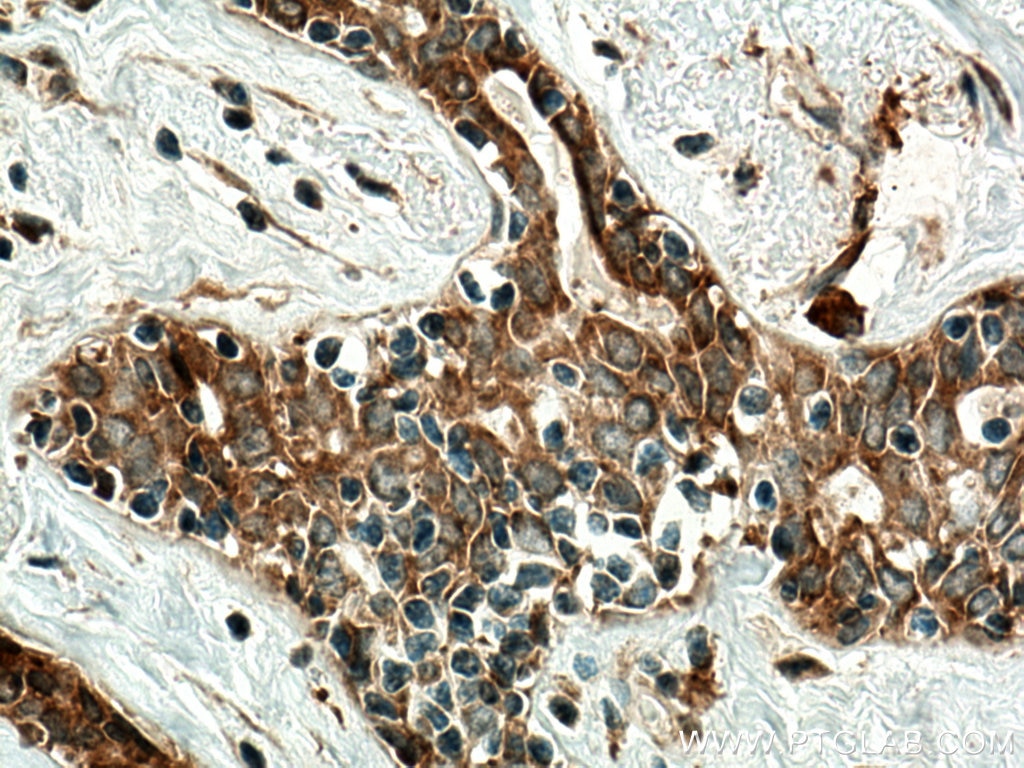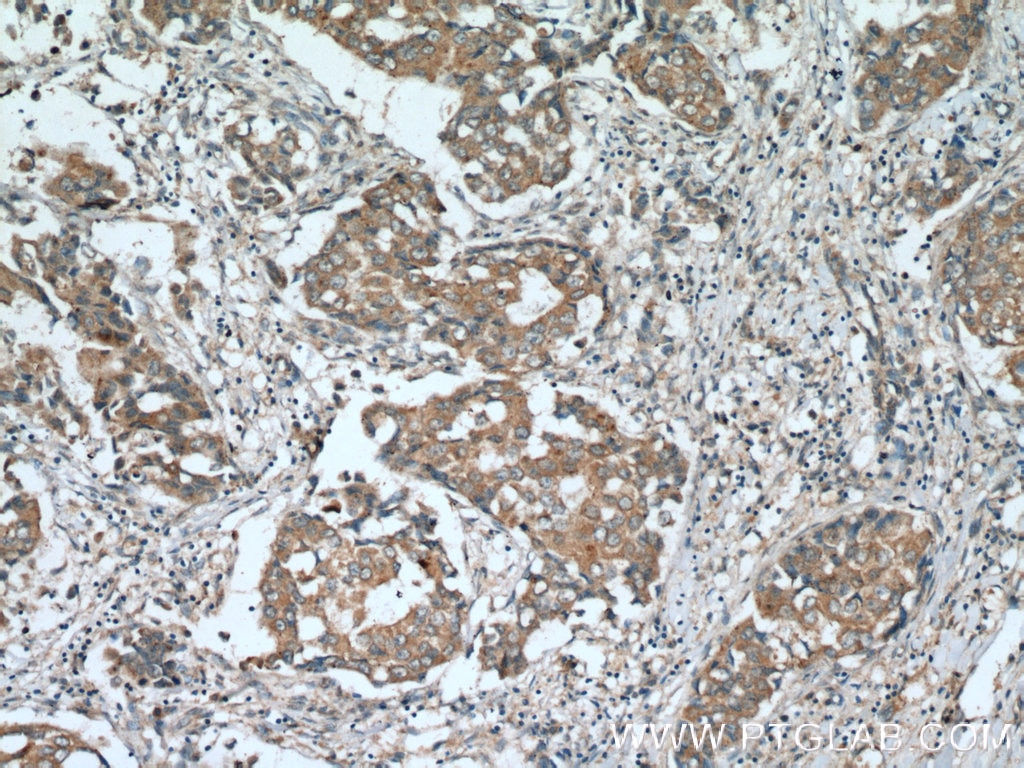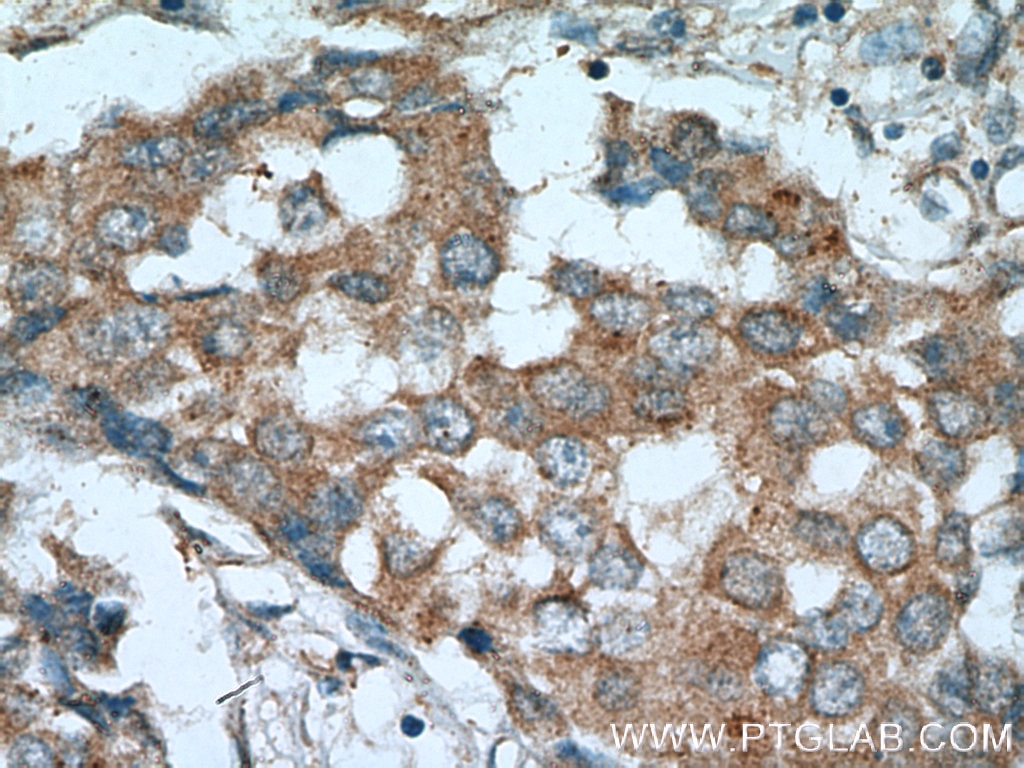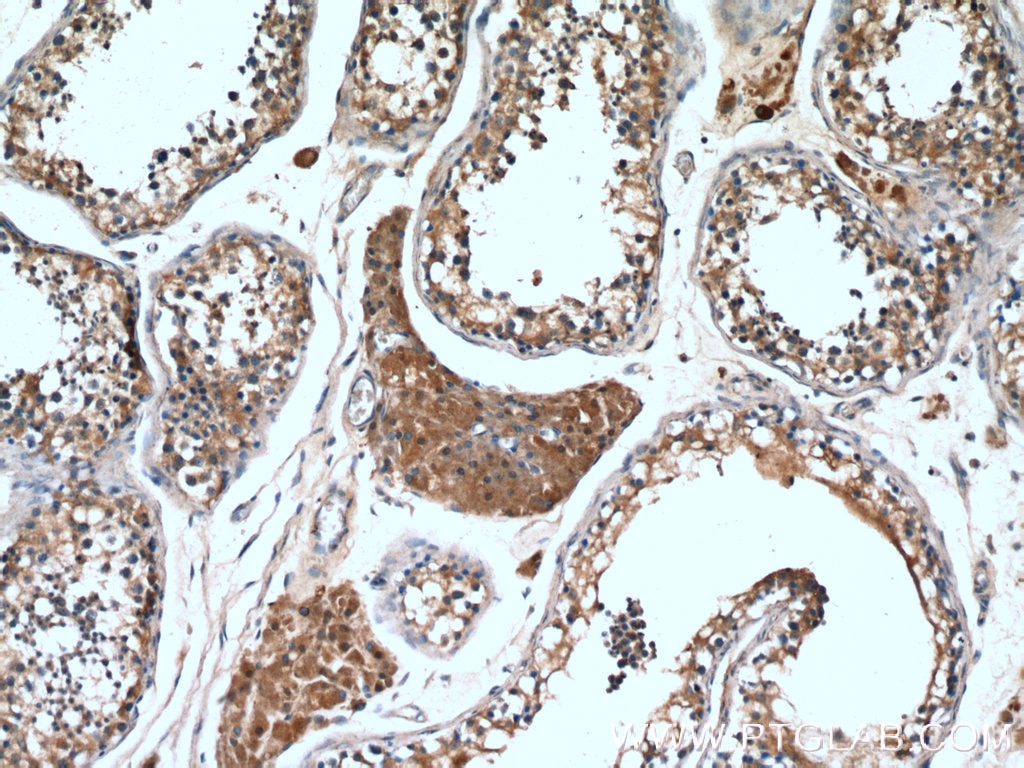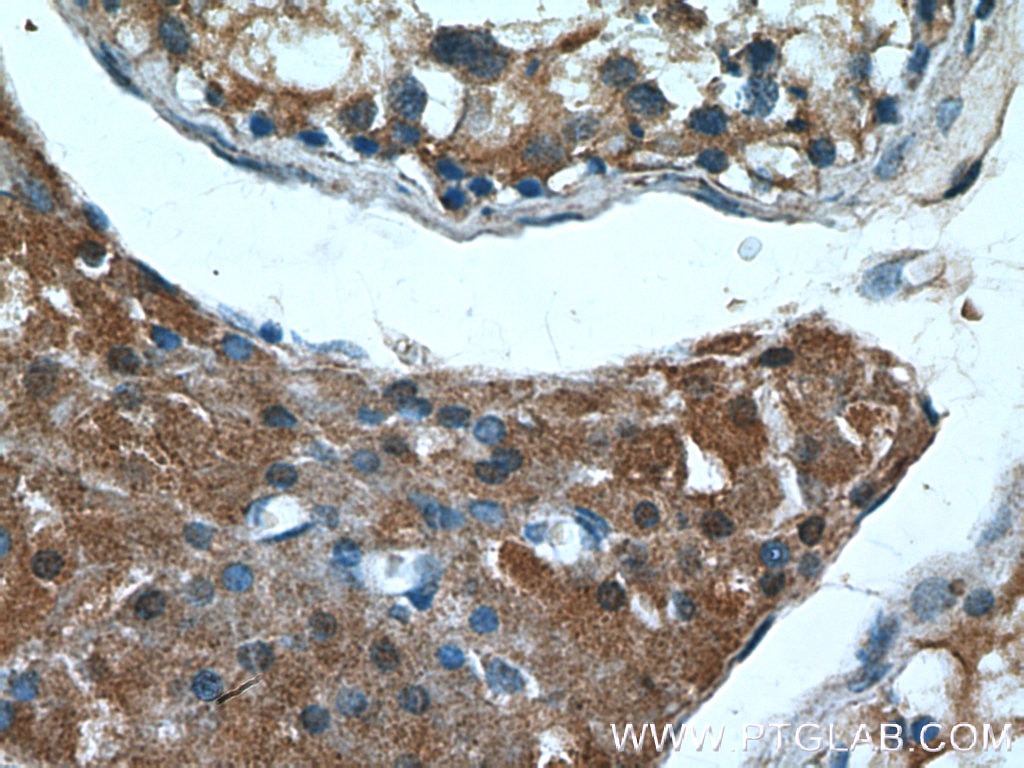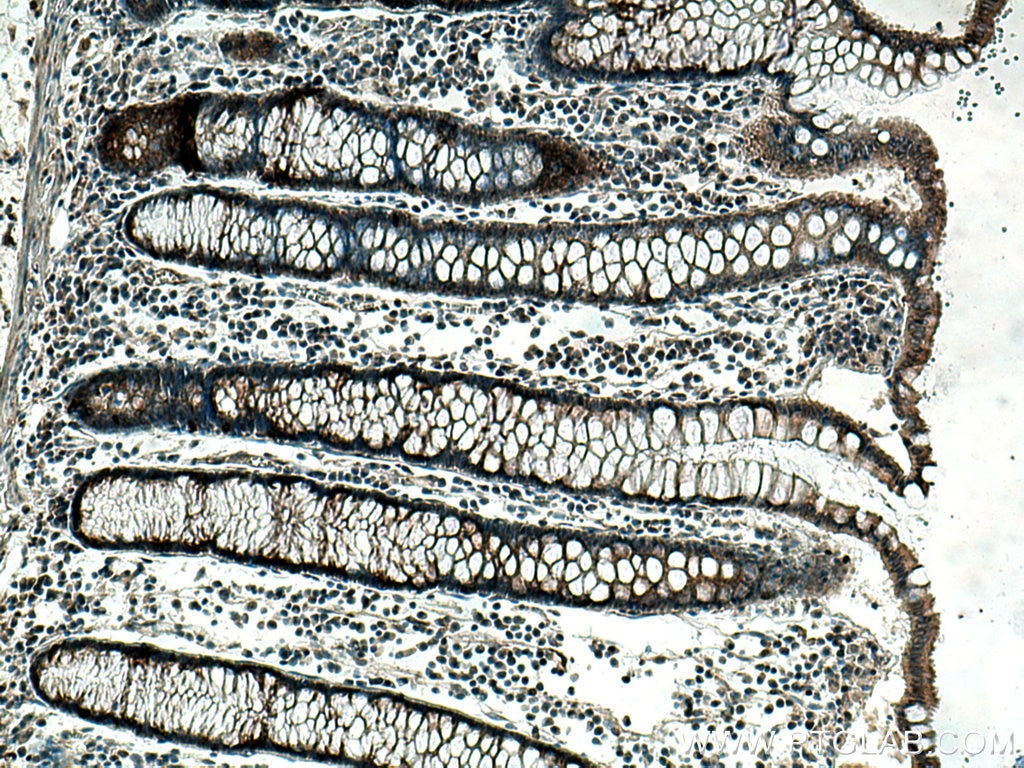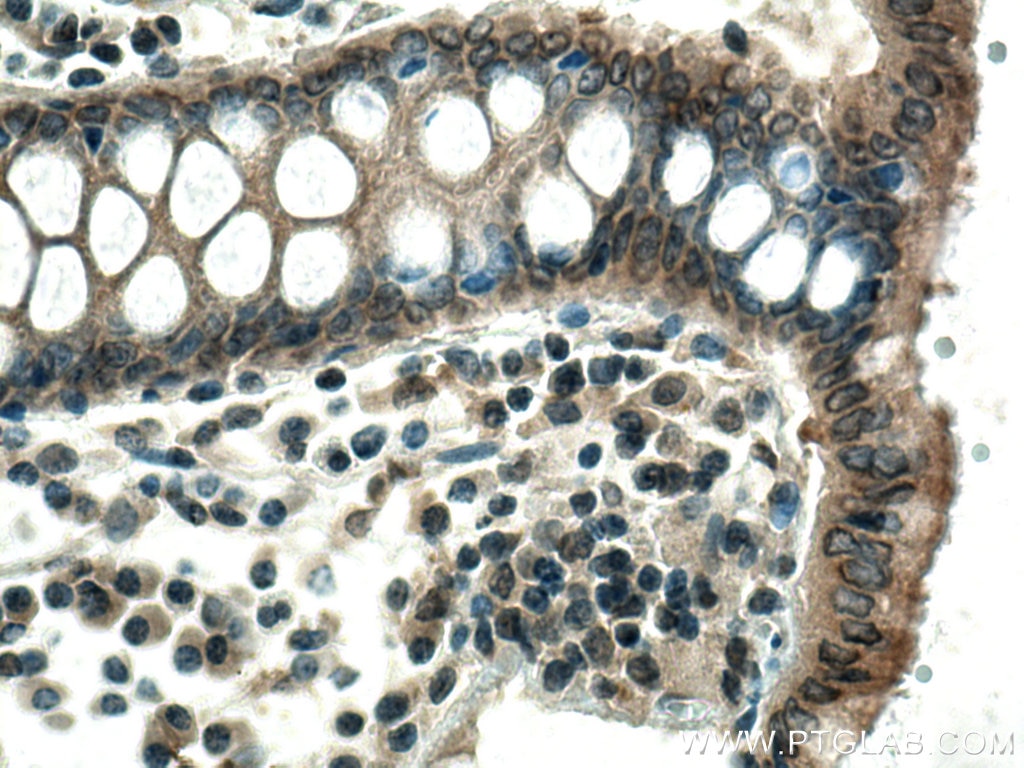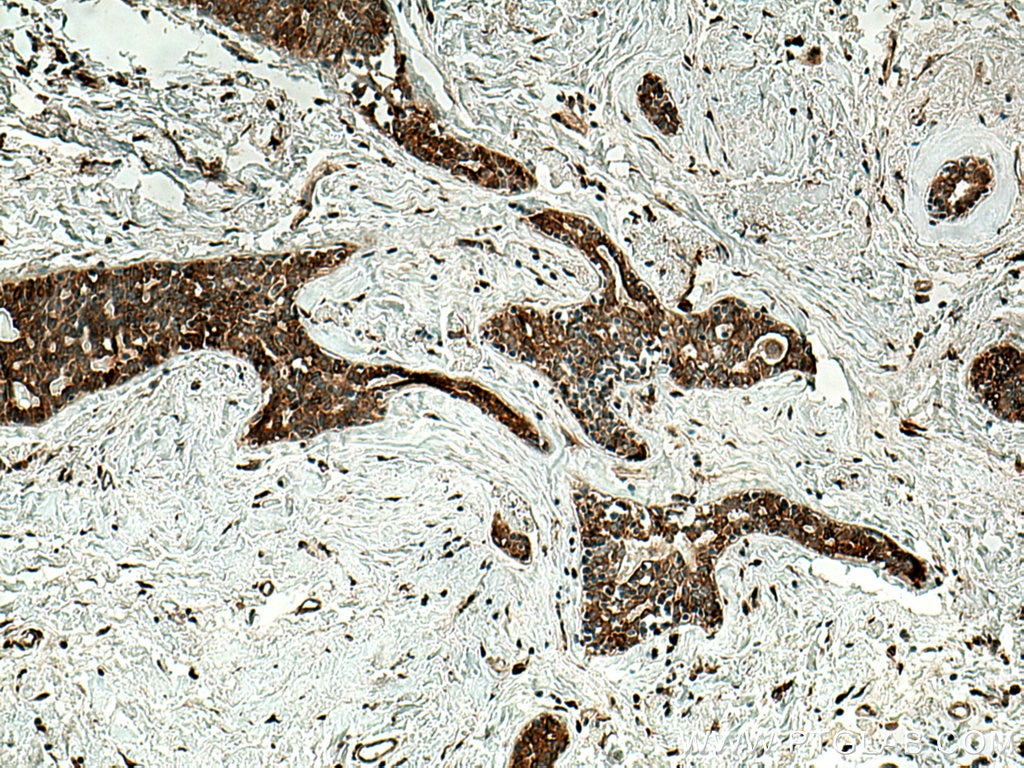Anticorps Polyclonal de lapin anti-RARA
RARA Polyclonal Antibody for WB, IHC, IP, ELISA
Hôte / Isotype
Lapin / IgG
Réactivité testée
Humain, rat, souris
Applications
WB, IHC, IF, IP, CoIP, ELISA
Conjugaison
Non conjugué
N° de cat : 10331-1-AP
Synonymes
Galerie de données de validation
Applications testées
| Résultats positifs en WB | cellules K-562, cellules MCF-7 |
| Résultats positifs en IP | cellules HeLa, |
| Résultats positifs en IHC | tissu de cancer du sein humain, tissu de cancer du côlon humain, tissu testiculaire humain il est suggéré de démasquer l'antigène avec un tampon de TE buffer pH 9.0; (*) À défaut, 'le démasquage de l'antigène peut être 'effectué avec un tampon citrate pH 6,0. |
Dilution recommandée
| Application | Dilution |
|---|---|
| Western Blot (WB) | WB : 1:500-1:1000 |
| Immunoprécipitation (IP) | IP : 0.5-4.0 ug for 1.0-3.0 mg of total protein lysate |
| Immunohistochimie (IHC) | IHC : 1:50-1:500 |
| It is recommended that this reagent should be titrated in each testing system to obtain optimal results. | |
| Sample-dependent, check data in validation data gallery | |
Applications publiées
| WB | See 8 publications below |
| IHC | See 1 publications below |
| IF | See 2 publications below |
| CoIP | See 1 publications below |
Informations sur le produit
10331-1-AP cible RARA dans les applications de WB, IHC, IF, IP, CoIP, ELISA et montre une réactivité avec des échantillons Humain, rat, souris
| Réactivité | Humain, rat, souris |
| Réactivité citée | Humain, souris |
| Hôte / Isotype | Lapin / IgG |
| Clonalité | Polyclonal |
| Type | Anticorps |
| Immunogène | RARA Protéine recombinante Ag0420 |
| Nom complet | retinoic acid receptor, alpha |
| Masse moléculaire calculée | 51 kDa |
| Poids moléculaire observé | 50-60 kDa |
| Numéro d’acquisition GenBank | BC008727 |
| Symbole du gène | RARA |
| Identification du gène (NCBI) | 5914 |
| Conjugaison | Non conjugué |
| Forme | Liquide |
| Méthode de purification | Purification par affinité contre l'antigène |
| Tampon de stockage | PBS with 0.02% sodium azide and 50% glycerol |
| Conditions de stockage | Stocker à -20°C. Stable pendant un an après l'expédition. L'aliquotage n'est pas nécessaire pour le stockage à -20oC Les 20ul contiennent 0,1% de BSA. |
Informations générales
Retinoic acid receptors (RARs) function as nuclear receptors that control gene expression in response to binding of the ligand retinoic acid (RA). Retinoic acid receptor alpha (RARα), also known as NR1B1 (nuclear receptor subfamily 1, group B, member 1), plays an essential role in the regulation of retinoic acid-induced germ cell development during spermatogenesis. Formation of a complex with histone deacetylases might lead to inhibition of RARE DNA element binding and to transcriptional repression (PubMed:28167758). Transcriptional activation and RARE DNA element binding might be supported by the transcription factor KLF2 (PubMed:28167758).
Protocole
| Product Specific Protocols | |
|---|---|
| WB protocol for RARA antibody 10331-1-AP | Download protocol |
| IHC protocol for RARA antibody 10331-1-AP | Download protocol |
| IP protocol for RARA antibody 10331-1-AP | Download protocol |
| Standard Protocols | |
|---|---|
| Click here to view our Standard Protocols |
Publications
| Species | Application | Title |
|---|---|---|
Br J Cancer All-trans retinoic acid enhances the cytotoxic effect of decitabine on myelodysplastic syndromes and acute myeloid leukaemia by activating the RARα-Nrf2 complex | ||
Metabolism Disruption of retinoid homeostasis induces RBP4 overproduction in diabetes: O-GlcNAcylation involved. | ||
Front Cell Dev Biol Silybin Prevents Prostate Cancer by Inhibited the ALDH1A1 Expression in the Retinol Metabolism Pathway. | ||
Stem Cell Rev Rep Pulse Activation of Retinoic Acid Receptor Enhances Hematopoietic Stem Cell Homing by Controlling CXCR4 Membrane Presentation | ||
Cell Signal ATRA-mediated-crosstalk between stellate cells and Kupffer cells inhibits autophagy and promotes NLRP3 activation in acute liver injury. | ||
Andrology A novel SNP in HUWE1 promoter confers increased risk of NOA by affecting the RA/RARα pathway in Chinese individuals |
